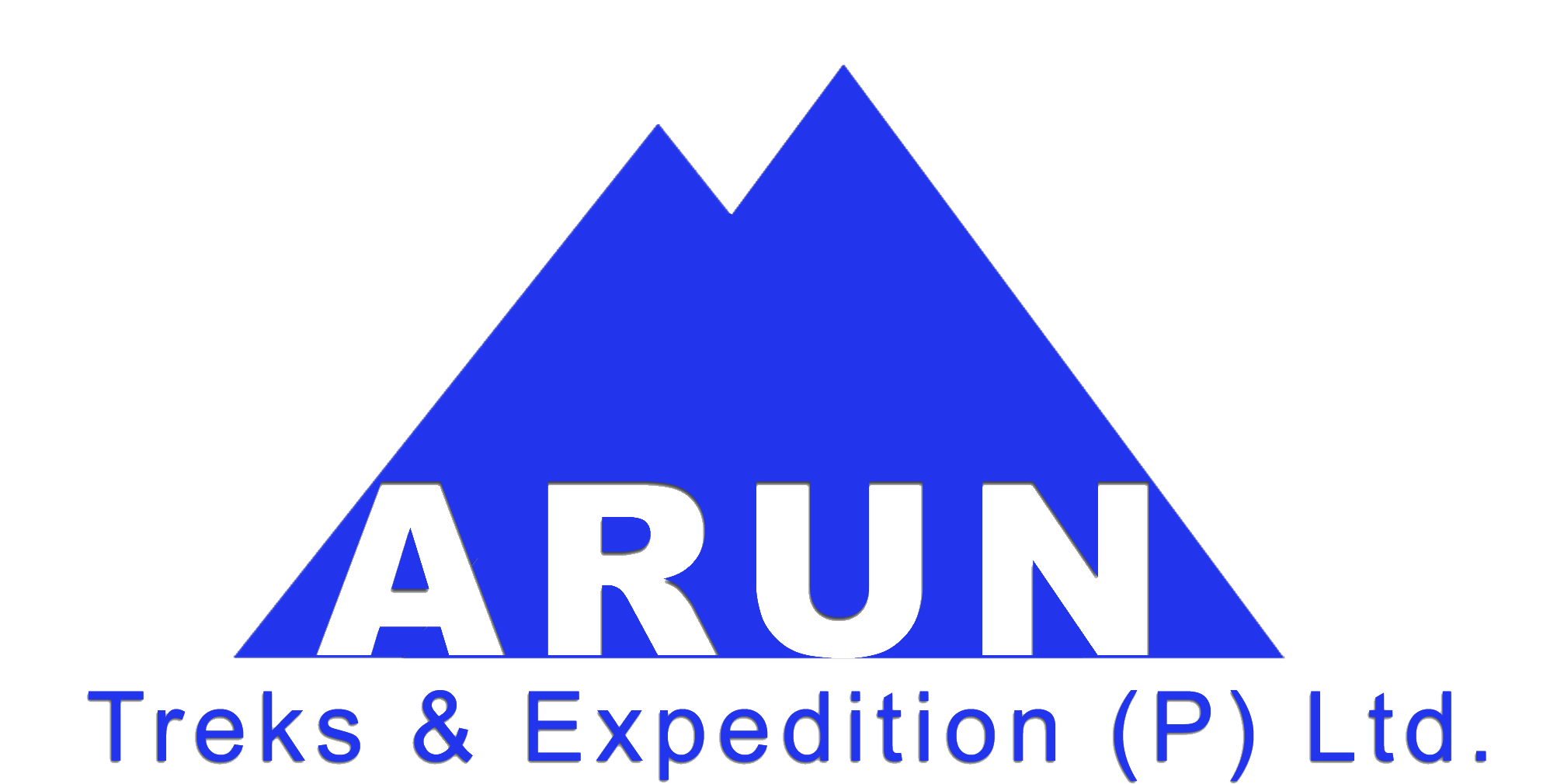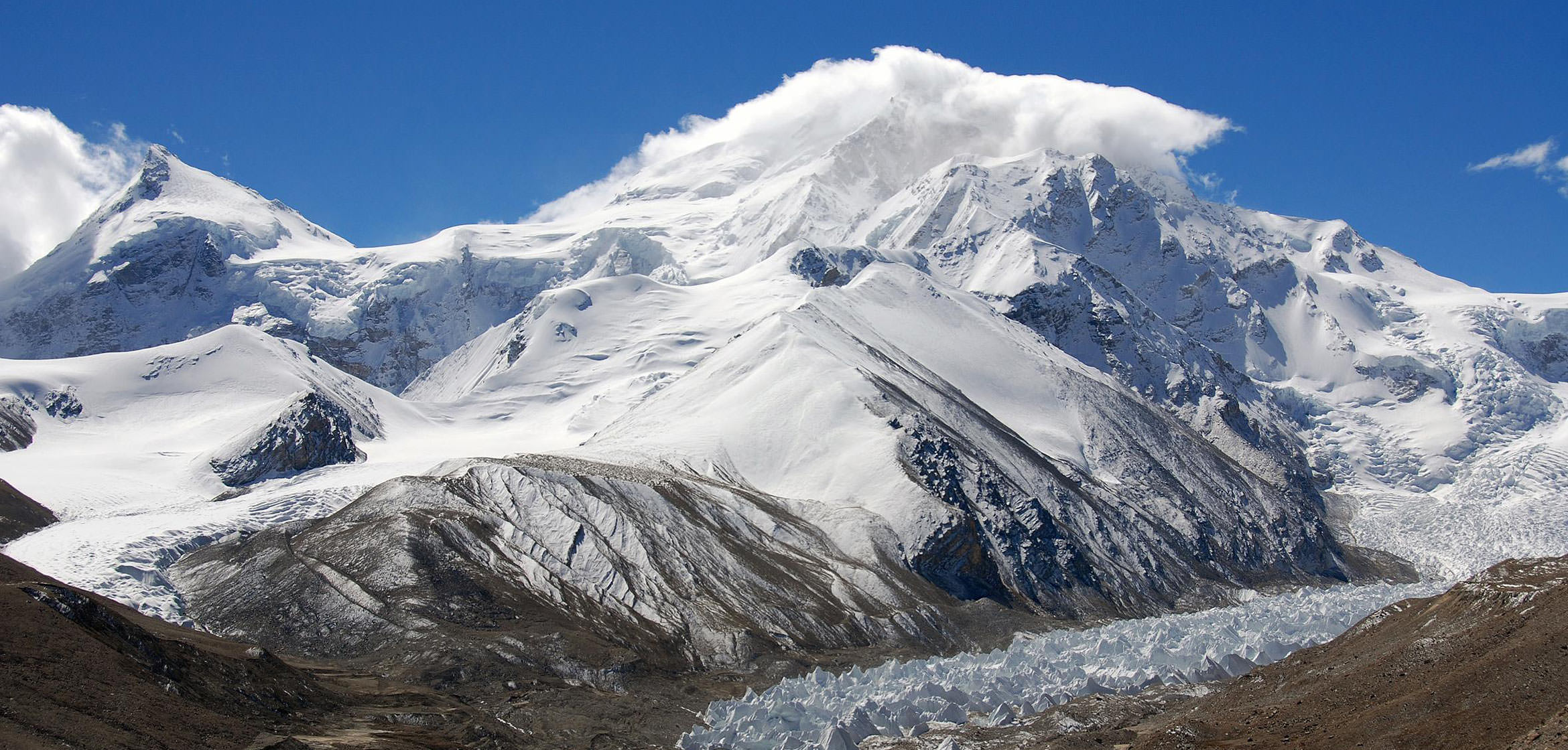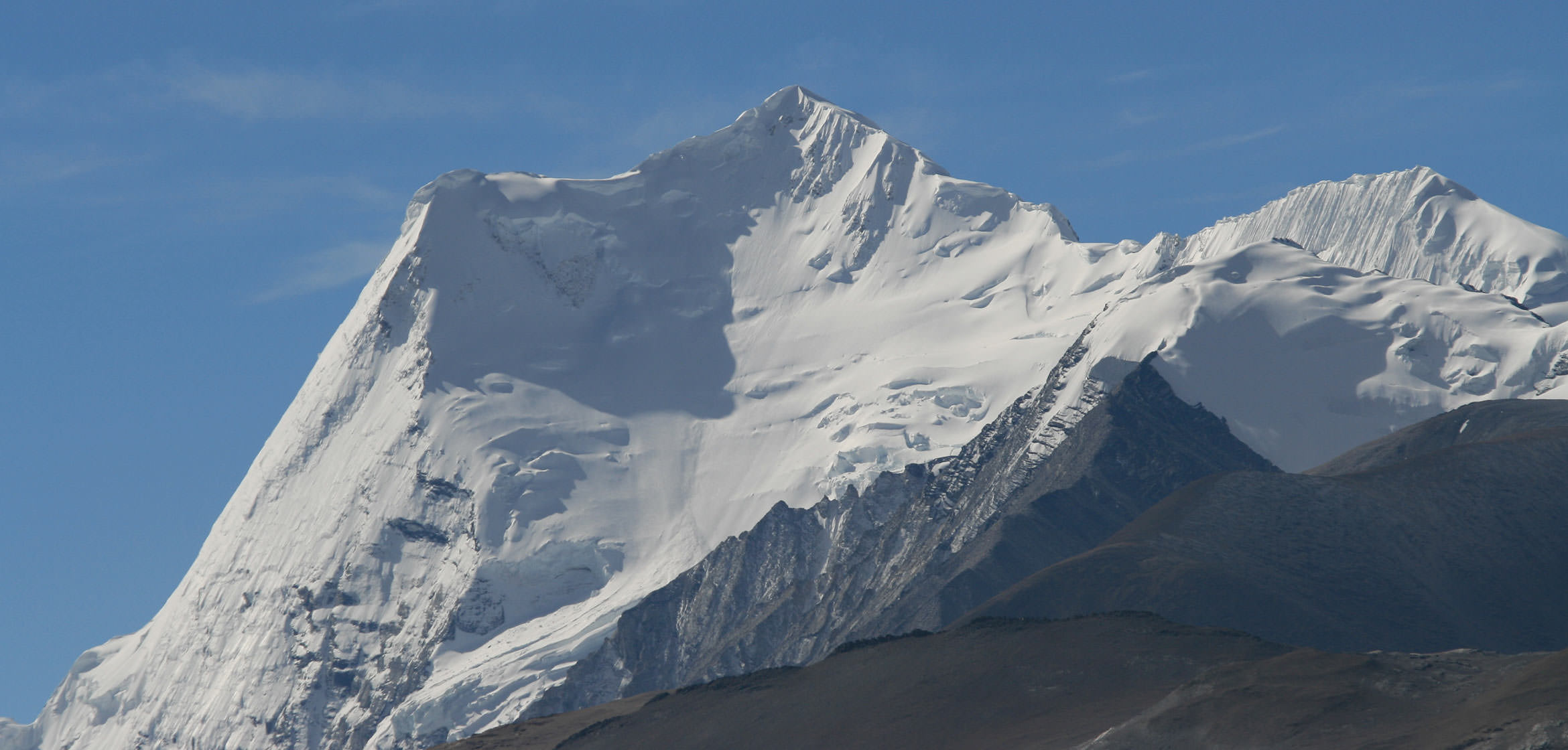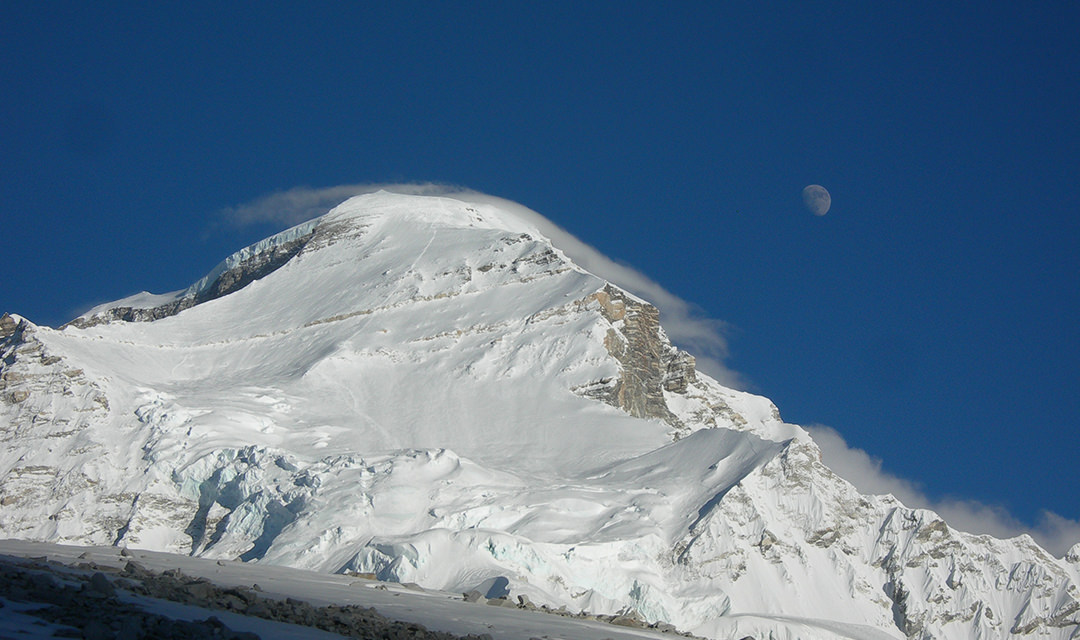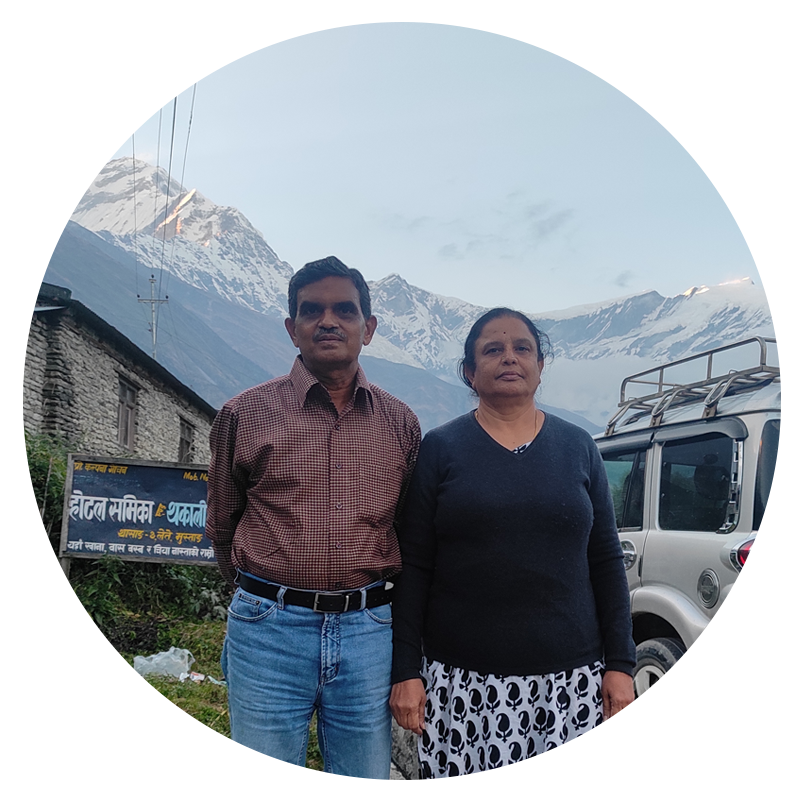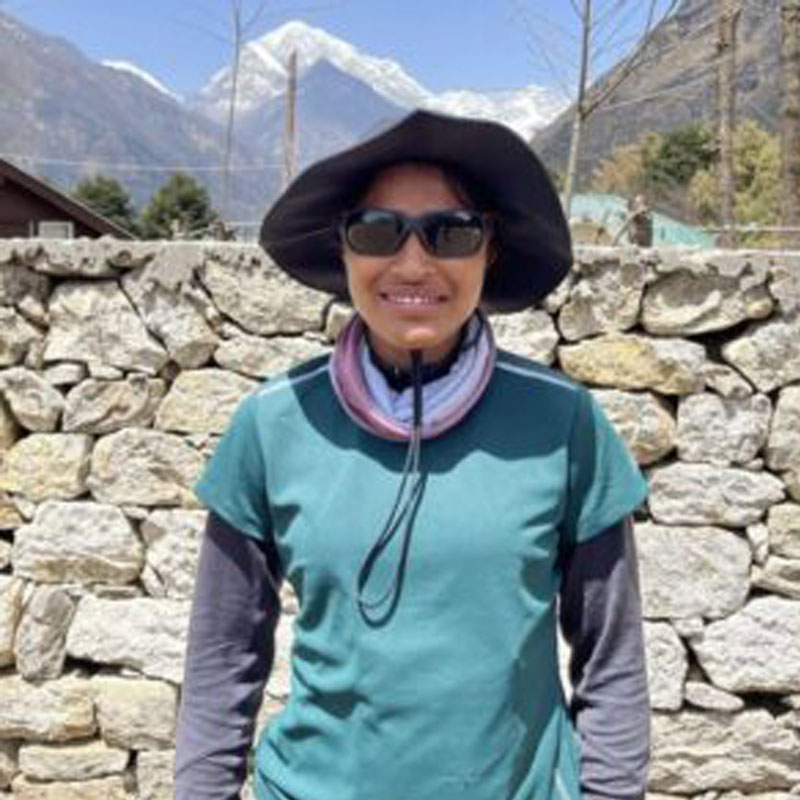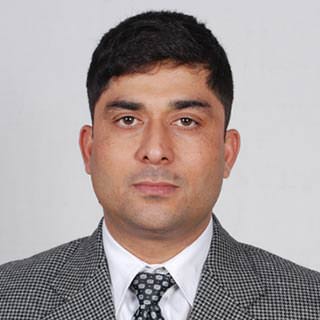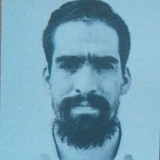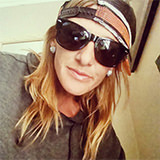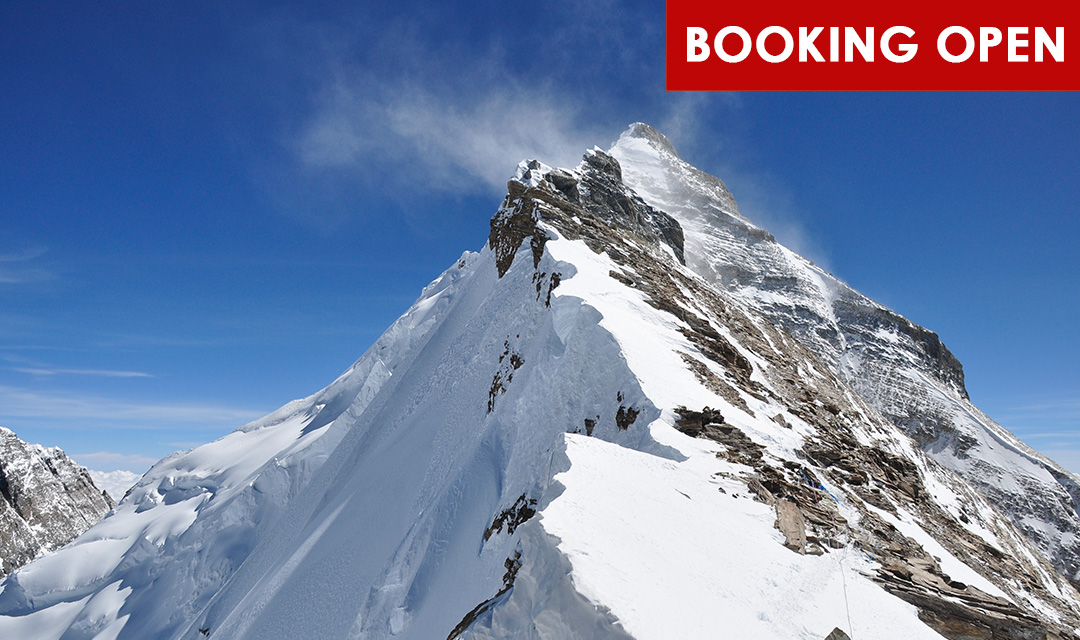
A straightforward climb and not technically demanding, an excellent mountain for climbers wanting to scale their first 8,000m peak with out taking much risk.
Mt. Shishapangma 8012m was first climbed by H. Ching and Nine Climbers in 1664. It's located in central Himalaya and lies totally inside the Tibet. To the east lies Mt. Molamenchen, west Mt. Xifeng and Mt. Nandengri and to the northwest Mt. Kangbochen.
Mt. Shishapangma, "the range above the grassy plain" was first climbed by the Chinese in 1964. There are three distinct climbing routes on the Southwest face with several other logical possibilities on the West Ridge and East face.

-
Experience the 14th highest peak, and technically easy but physiologically challenging climb
-
Stunning views from the summit of some of the highest peaks on earth namely, Everest, Lhotse, Cho-Oyu and Makalu.
-
Accessible 8000m climb Himalayan climb and test of skills and physiology for Everest attempt
-
Experience your first 8000m climb on relatively safe route
-
Experience your first 8000m climb on relatively safe route
-
Interesting experience of Tibetan culture in Tingri
-
Test for mountaineering isolation and psychological endurance
 Arrival in Kathmandu
Arrival in Kathmandu Briefing, sightseeing, preparation for expedition
Briefing, sightseeing, preparation for expedition Final preparation for expedition
Final preparation for expedition  Drive to Timure border, after immigration; drive to Kyirong(Rasuwa)
Drive to Timure border, after immigration; drive to Kyirong(Rasuwa) Kyirong. Rest day for acclimatization
Kyirong. Rest day for acclimatization Drive to Tingri
Drive to Tingri Rest & acclimatize at Tingri
Rest & acclimatize at Tingri Drive to BC
Drive to BC Base camp preparation
Base camp preparation .png) Trek to Advance base camp
Trek to Advance base camp.png) to
to .png) Mt. Shishapangma climbing period
Mt. Shishapangma climbing period .png) Trek to Base camp
Trek to Base camp.png) Drive to Kyirong
Drive to Kyirong.png) Cross border & drive to Kathmandu
Cross border & drive to Kathmandu.png) Kathmandu, free day
Kathmandu, free day .png) Final departure to home
Final departure to home
Mt. Shishapangma 8012m was first climbed by H. Ching and Nine Climbers in 1664. It's located in central Himalaya and lies totally inside the Tibet. To the east lies Mt. Molamenchen, west Mt. Xifeng and Mt. Nandengri and to the northwest Mt. Kangbochen.
Mt. Shishapangma, "the range above the grassy plain" was first climbed by the Chinese in 1964.
There are three distinct climbing routes on the Southwest face with several other logical possibilities on the West Ridge and East face.
Our itinerary that begin right after spending couple of days in KTM for necessary preparation and by driving into Tibet through Kordari/Friendship bridge, crossing the Himalayan through gorges of Bhote Koshi. The drive is simply awesome!! And full of excitement, we'll arrive on the other side of Himalaya from Kathmandu to Nyalam on first day. We'll spend our nights in Nyalam relaxing and hiking the hills for acclimatizing.
From Nyalam, we begin our overland travel to Chinese base camp. After arrival at Chinese Base Camp, we'll rest, acclimatize and make the necessary climb preparations before making our ascent to advanced base camp. We'll cross through steep moraines to establish Camp 1 (6730m), which should take around 4 - 6 hours depending on weather conditions and how we're feeling. We'll traverse a ridge and ascend a 50m headwall to Camp 2 (7045m) - a hard day taking 6 - 7 hours. Our strong Sherpas will fix all ropes as require. We'll establish Camp 3 (7400m) on the southwest face, and the following day, set up for the summit. Depending on fitness, we'll be moving up and down the mountain several times, acclimatizing and stocking the higher camps.
It will require an extra push to reach the true summit peak on the far end of the high snowfield. Summit day, though long and arduous, will be well worth it when the highest peaks in the world are in view.

• Experience the 14th highest peak, and technically easy but physiologically challenging climb
• Stunning views from the summit of some of the highest peaks on earth namely, Everest, Lhotse, Cho-Oyu and Makalu.
• Accessible 8000m climb Himalayan climb and test of skills and physiology for Everest attempt
• Experience your first 8000m climb on relatively safe route
• Interesting experience of Tibetan culture in Tingri
• Test for mountaineering isolation and psychological endurance

Fitness
To participate in this expedition you must be a very fit and active winter-walker-climber in good health. Prior to joining our group, please see your doctor and obtain the necessary permission and advice, as well as medications for travel in extremes of altitude, and also for exotic locales.
Experience
Previous mountaineering experience is required to at least 6000m. You will also need to be very determined. Shishapangma is a non-technical peak but due to lack of proper acclimatization, can often make any simple trip unsuccessful.
To succeed you will need to be extremely fit and have a high level of endurance. You don't need to be fast but you need to be steady and strong. Mental toughness plays a large role as does the ability to relax and let your body acclimatize.

Our style
On this Shishapangma Expedition, your Expedition guide will be a qualified Nepalese mountaineering guide. They are there to ensure your expedition a wonderful, fun and safe experience. Measurement of safety is our foremost priority.
Most of our climbing guide and climbing sherpas are very well trained and have at least climbed Mt. Shishapangma, Mt. Everest, and other renowned mountains few times.
Your accomplished and friendly expedition guide will help you to enjoy and appreciate the cultural, and natural attractions of the region. They will assist with daily arrangements as you eat in and stay in the tents.
The package uses a steady acclimatisation program and allows time for bad weather along the way, giving participants the maximum chance of success.
The expedition itinerary is well planned, well led, and well resourced with good quality food, transport, equipment, first aid and communications.

In Kathmandu: We will be staying at the Shanker Hotel (4 star). This charming historic palace has a huge peaceful garden with a pool and is just on the edge of the main tourist area, Thamel.
It is safe and clean and well staffed, and is a safe place to leave your clean town clothes and other gear when you are in the hills. There are many restaurants in Kathmandu catering to western tastes as well as plenty of local Dahl Bhat (rice and lentils) shops at very reasonable prices.
On the Trek: We will stay in lodges before getting to the Base camp and enjoy full camping style services onwards (cook, kitchen hands, morning tea to your tent door, camp sherpas to help with equipment, porters, yaks etc). Some of our head cook has been with us since 1995 and has picked up Thai curries, Italian pastas and a whole host of other dishes, which are very welcoming at the end of a good days trekking. We also have cooked breakfasts and cooked lunches where possible.
On the Mountain: We will use specialized mountaineering tents for our brief stays up high. Food will be prepared by your guide and Sherpas and will be more basic than you might expect at home.
Note: Every lodging service in Tibet is very basic and the meals are all Chinese. So for few days prior to Base camp, you have no choice but to go with the Chinese food.

Autumn season (Sept-Nov)being the best season for climbing Mt. Shishapangma, offers excellent weather and tantalizing mountain views, and also best season for peak climbing.
Summer months (June-September) of the year which coincides with monsoon begins in mid-June and drains in mid-September making travel wet and warm. The mountain views may not be at their best as rain clouds and haze over hang the mountains occasionally obscuring the enchanting views. These times are blessed for the keen botanist as the higher valleys and meadows blossom with flowers and lush vegetation.
Spring season (March-May) is the expedition season and the best time for climbing the high peaks. It is mildly warm at lower elevations but occasional haze mars beautiful view of mountains. At higher elevations over 4,000 meters the mountain views are excellent and the temperature is quite moderate even at night.
Winter season (December-February) is noted for cold weather with occasional snowfall at higher elevations. Again, excellent views are common. These months are popular and ideal for trekking for those who are well equipped or who remain at lower elevations below 3,000 meters. Most of the hotel owners will come to the lower altitude cities like Kathmandu and Pokhara.
Although Travel in Nepal can be organized throughout the year, October through May is considered to be the best months for trekking.

The unit of the Nepalese Currency is Rupee. One Nepali Rupee is made up of 100 paisa. Nepali Rupee notes come in Rs. 1, 2, 5, 10, 20, 25, 50, 100, 500 and 1,000. Coins come in paisa 5,10,25,50 Rs. 1, 2, 5 denominations. Paisa coins are not currently used for common transactions.
Foreign currency, and traveler cheques, can easily be exchanged at banks or authorized agents. In Kathmandu banks have money exchange counters, which are quick and convenient.
MasterCard, Visa and American Express are accepted at all major Hotels, Travel Agencies, Restaurants and Stores. Only the first two though, are currently accepted at banks for money advances. As from august 2000 ATM services are available in Kathmandu.
In the cities, and specially while trekking, change for Rs500 and Rs1000 bills is not easily available.

Banks are open between 10:00 A.M. to 2:30 p.m., Sunday to Thursdays and between 1 0:00 a.m. to 12:30 p.m. on Fridays. Closed on Saturdays and national holidays. Some Banks in Thamel, Kathmandu are open till late.

We recommend cancellation insurance to protect your investment. We require participants to have travel insurance that covers medical expenses, Chopper evacuation and repatriation. Please ensure that your chosen policy provides cover for the activities (trekking and mountaineering with ropes and guides) and in the localities in which you will travel (Nepal, to elevations up to 8012m/26286ft above sea level).
You may already have your own policy but if not you will need to put something in place. Your nationality will determine what options are available to you to cover this trip. For example the British and New Zealand Mountaineering Clubs provide cover for locals; Australians can look into Insure for less with the appropriate extensions to the standard policy. Whatever policy you take out, you must ensure that is covers the activities you will undertake on this trip.
Note: There are no any Heli rescue services available inside Tibet and are mostly done by land transportation. Nepal heli rescue can only get up to the border of Nepal and Tibet at Kodari/Tatopani.

• Royalty of peaks, peak registration
• Chinese visa fee for complete team members
• Chinese custom clearances at the China border
• 04 nights 3 Star hotel accommodation in Katmandu Single room BB basis
• Private transport from Katmandu to Kodari Border & back
• Land cruiser jeep transport from the China Border to BC & back
• Chinese truck to carry equipment and food to BC
• Full board accommodation en-route to/from Base camp.
• Chinese Liaison officer.
• Head guide/Sardar to look after all the matters
• Necessary numbers of experienced Cook & kitchen boys
• Professional & experienced High Altitude Climbing Sherpa (One Sherpa per 2 clients)
• Meals at BC & ABC
• Hot drinks & beverages
• Best quality high altitude tents
• Imported High food for higher camps
• Best quality single tent at BC & ABC (share tent available)
• All necessary kitchen equipments
• Dinning tent with gas heater at BC & ABC.
• Comfortable toiletries and shower facilities at BC & ABC
• Yaks for BC-ABC-BC to carry expedition loads
• Necessary climbing hardware gears & fixed ropes except personal gears
• EPI gas with burner for the above ABC use
• Oxygen with regulator set for medical purpose at BC/ABC
• Radio walkie-talkie with base station & permit from CMA
• Satellite phone for emergency call purpose (personal call will be charged US$ 3.00 p/m)
• Generator or Solar panel system with battery for recharging power supply purpose
• Storage & Communication tent at BC/ABC
• Gamow bag at ABC for medical purpose
• Insurance of all local team members
• All airport/hotel transfers.
• Celebration meal & pre-briefing.

• Personal travel Insurance
• Nepal visa/re-entry visa fees
• Major meals in Kathmandu.
• Support climbing Sherpa
• Personal climbing gears
• Personal nature expenses
• Cost of emergency evacuation
• Summit bonus & Tips to the local staff

Most of our adventures in the Himalaya take us to remote regions of high altitude. We always take our time to acclimatize properly and we allow for additional rest days. While most people may experience minor ill effects from high altitudes, there are some who have persistent symptoms, which require return to a lower altitude or emergency evacuation. Adjusting to a new diet can also take some time.
All clients are required to have travel insurance covering emergency rescue, usually by helicopter. We must stress that this kind of evacuation occurs in a life or death situation only. Rest and/or descent to a lower altitude are the best remedies for most illnesses experienced out on the trail. Circumstances differ, and the head guide with regard to treatment and itinerary will evaluate each situation. Considering the ill person condition, if helicopter evacuation required then just co ordinate with your guide, he can talk to us, we will arrange the fastest evacuation system immediately. We will work with you to accommodate your needs and requests to the best of our ability. There are small, limited health clinics in some areas, hours of operation dependent upon the season. Additional costs incurred in cases of illness are not the responsibility of mine or will be charged as extra cost.
| Trip Code | - | ATE-ShishapangmaEx |
| Altitude | - | 8012m/26286ft |
| Grade | - |  |
| Activities | - | 8000M Expeditions (Tibet) |
| Trip Duration | - | 40 |
| Trip Best Season | - | Spring/Fall season |
| Group Size | - |
 (Flexible for private groups (Flexible for private groups |
| Start/End at | - | Kathmandu/ Kathmandu |
| Destination | - | Tibet |
| Departure Date | - | N/A |
| Cost | - | US$ 19,500 |
| Hotel Info | - | N/A |
.png)
- Travel/town clothes (can leave extras in hotel in KTM)
- Sun hat suitable for snow conditions
- Sunglasses: Category 3 or4, glacier type, UV & polarized are best
- Snow goggles (as for skiing)
- Warm (fleece/wool) hat or beanie
- Fleece scarf or neck gaiter AND balaclava
- 1-2 pairs of thermal liner gloves
- Windstopper fleece gloves
- Heavy mitts with waterproof shell (note: mitts not gloves)
- T-shirt/long-sleeved shirt
- 2 Thermal tops
- Fleece jacket or pullover mid weight
- Fleece jacket heavy weight
- INCL Mid-heavy weight down jacket
- Rain and wind-proof jacket, preferably Gore-Tex
- Rain and wind-proof pants (best with full side zips)
- Trekking shorts&/or long pants lightweight
- 1-2 Thermal long pants
- Fleece long pants, mid weight
- Several pair's socks and underwear
- Trekking boots – we suggest strong leather boots
- Warm boots for camp (e.g. sheep skin boots) *Optional but great!
- Sleeping Bag (-30) 1
- Sleeping bag (-40) 1
- Sleeping Bag linner 1
- Summit liner Shoes 2 pairs
- Summit Gloves 1 pair
- Camp 3 gloves 1 pair
- Trekking sunglass 1
- Summit hot woolen 1 pair
- Liner Gloves 2 pairs
Other Personal Gear
• Sun screen, zinc cream and lip balm
• Wash kit (small personal toiletries, nail clippers and pack towel)
• First aid kit and blister kit
• Personal medicines including your usual medicines
AND 1 course each of (usually available in Kathmandu):
• Respiratory antibiotic (e.g. Amoxycillin)
• Gastrointestinal antibiotic (e.g. Ciprofloxacin)
• Gastro treatment (e.g. Imodium)
• Mild pain killers (e.g. Aspirin/paracetamol/ibuprofen)
• Throat lozenges
• Altitude medication (e.g. Diamox)

Day pack 70L - 85L
• Down suit
• One sport millet shoes
• Water containers: minimum 3L: e.g. Nalgene wide mouth bottles 1L + bottles or bladder another 2L capacity
• INCL Foam sleeping mat
• An extra sleeping mat (*recommended; e.g. Thermo-Rest or Ridge Rest
• 1 Summit down sleeping bag for high camps
• INCL Sleeping bag for base camp and trek use
• Water-proof bag for sleeping bag (e.g. dry bag or robust plastic bag(s))
• Head lamp (we suggest Black Diamond with LED), spare batteries
• Pee bottle — wide mouth Nalgenes are good *Optional
• Crampons Alpine style with rapid-fix bail type to suit your boots (e.g. Black Diamond Sabretooth)
• Gaiters (for snow) appropriate to your plastic & trekking boots
• Adjustable trekking pole(s)
• Ice axe: one only, 65-75cm in length
• Climbing harness with a belay loop, adjustable leg loops
• Belay/Abseiling gear: e.g. Black Diamond ATC
• Ascender e.g. Petzl expedition ascender
• 2 Non-locking carabineers
• 2 Locking carabineers (wide gate preferred)
Group Equipment Supplied
INCL Group medical kit (for altitude illness, trauma, reserve antibiotics); emergency oxygen and portable altitude chamber
INCL Satellite phone (pay for air time used: USD /minute)
INCL Sleeping tents, dining tent, all cooking and eating equipment & food on trek/climb
INCL 240VAC generatorat BC to recharge camera batteries
INCL Barrel or duffle bag for transporting personal gear by Yak and truck
INCL Climbing ropes, fixed safety ropes
INCL Snow anchors, ice anchors, rock anchors, v-thread cord
NOTE: You must have all of the above personal gear, clothing and equipment. It may be possible to buy some extra equipment (If forgotten) but don't rely on it.
R: This item is available to rent
INCL: This item included in package
Arun Trek's trip web pages, and pdf info packs have lots of info about each specific adventure (search for your adventure here). You may also like to look at our photo galleries or videos for a taste of adventure, or download a wallpaper to inspire you at your computer. This page has answers to some more general Frequently Asked Questions (FAQS) about climbing.
As all of our mountain climbing adventures begin with a trek, you might also like to look at the Trekking FAQs.
If you have other questions, please ask our friendly team, by email, phone, and skype.
Q) Can I really climb a mountain? Do I need to have climbing experience? How can I climb Mount Everest? Can I climb the seven summits?
A) The level of experience and skills required depends on your particular goal (search for your adventure here). We suggest that people undertaking a first climb should have had at least overnight trekking experience. For those who wish to take on a technically difficult, remote or extreme altitude mountain we'd expect participants to have appropriate experience and skills. Some ideas for preparing for climbing goals are given at the bottom of this page.
Q) Why go on a guided expedition?
A) There are many reasons that might make a guided expedition attractive even for experienced climbers. These include someone else taking care of all those details (including thing as diverse as booking and confirming hotels, checking the number of evening snacks, ensuring reliable support, transport, permits, visas, team members, gear, etc etc etc etc). This saves your time and energy for the part that really matters - working on achieving your goal. The high levels of support and experience aim to give you the best possible opportunity to succeed, a high level of risk management, and the Arun leaders and staff are there for YOU!
Q) What type of people comes along?
A) Climbing expeditions usually attract people in their twenties to fifties. Participants tend to be seeking a good quality, safe, well supported, good value and enjoyable adventure rather than the lowest cost.
Q) How fit do I need to be? Will I have to carry a lot of weight? Should I be able to do 100 chin ups?
A) The fitter you are, the more fun you (and your companions) will have. You will find guidance on preparing for your expedition on each adventure's web page (search here), our info packs and trip dossiers. A minimum level of fitness would have you being able to walk all day on uneven, hilly ground, carrying your day pack, and be able to get up again the next day. Many climbs will require a higher level of fitness and strength so you can carry heavy gear to high camps and really exert yourself on summit day.
Q) What gear is provided?
A) Included are individual sleeping tents for the trekking phase of most climbing expeditions, with dining and kitchen tents. On the mountain participants share serious, proven mountain tents. Climbing teams are equipped with emergency communications and first aid equipment as well as more prosaic things like climbing and cooking gear. There is a detailed gear list for each adventure which outlines what we provide as well as what you should bring. (Search here for specific adventures and download the info pack.)
Q) What's the food like?
A) Food arrangements are specific to each adventure, but you get three meals a day while on the track. In cities included is breakfast and, depending on the trip and the nature of the activities may also cater for lunch and dinner for the group. In the Himalayas the kitchen staffs have been training for years and work magic over gas or kero stoves in their kitchen tent.
While trekking the cooks prepare a varied menu of wholesome, tasty and plentiful food using fresh ingredients where possible. A trekking breakfast in the Himalayas usually includes cooked foods e.g. eggs, tomatoes, cereal or porridge, toast & spreads and fruit and a selection of hot drinks.
Lunch is often soup and a packed lunch, or a cooked lunch. Dinners are generally soup, a main meal (one of many Asian or European style dishes) veges, and a dessert (fruit to custard to baked apple pie!) Drinking water: will be provided at camps (collected with care, filtered, treated with chemicals and/or boiled), and at lunch time where possible. It is wise to carry a small amount of purifying chemicals (e.g. Iodine or chlorine) with you, in case you happen to need water at an odd time. In the developing world care should be taken to avoid untreated water and potentially contaminated foods like uncooked salads and some fruit. Bottled water is available in cities, but of course you can treat tap water in your own bottle too.
On the hill we eat easy to prepare food, often prepared by the team with assistance from guides and staff: freeze-dried foods, crackers, soups, snacks etc. On big mountains it is often a challenge to eat, so we provide foods to tempt your appetite and give you sustenance.
Q) Who will be responsible for my safety?
A) The short answer - you! All participants are expected to behave in a responsible manner, taking due care of themselves and others. Your expedition leader is responsible for the group including participants and staff. He or she will advise, manage and assist everyone, sometimes with the support of an expedition first aider or doctor, and will be assisted by guides, sherpas, and you and your climbing colleagues, all of whom will have roles to play.
Q) What if I get sick or have an accident?
A) Despite the best precautions, people do sometimes fall ill, sprain something or develop symptoms of AMS. Our expedition leaders will manage your care keeping in mind what's best for you and the rest of the group. Precautions include first aid qualifications and kits, emergency communications, evacuation plans, your travel insurance cover and our pre-preparation and medical advisors.
Q) What about altitude sickness?
A) AMS Acute Mountain Sickness (or altitude sickness) is the body reacting to the stress of high altitude. It is a concern for trekkers in the Himalayas and elsewhere above about approximately; say (is that enough vagueness!) 3,000m. Exposure to high altitude can lead to a number of 'normal' physiological reactions as well as mild to extremely serious illness and even death. The treks are designed with relatively slow acclimatisation schedules, rest days and alternative options. And there are medications and a number of management strategies in place should they be required. Don't be unduly concerned, but please talk to us if you have questions.
Q) I don't have much time, can't we do it quicker?
A) The adventures are designed around what we feel is the optimum itinerary, which incorporates adequate time for the suitably fit participant to do the climb comfortably; flexibility for weather, illness, unforeseen delays; time to enjoy the experience, your climbing colleagues and staff; learn about your surroundings if you wish; and, for altitude adventures, a fairly slow acclimatisation regime to minimise the risk of altitude sickness and maximise your chance of reaching your goals. All while also trying to minimise your time away from home. We would generally not recommend shorter itineraries (such as those used by less scrupulous operators) unless you were genuinely prepared to turn back if you (or your travel companion) becomes affected by AMS. If you really don't have the time available, we can perhaps suggest an alternative itinerary or goal that will work for you.
Q) My friend would like to visit, but isn't really interested in climbing...
A) Your friend, spouse, family, colleagues may like to join you on the trekking phases of the expedition, and could stay in Base Camp or Advanced Base Camp, depending on the trip, when you are on the hill. If they want to accompany you to our base city (e.g. Kathmandu) we can easily arrange extra accommodation, and places on our day tours, but we may also be able to arrange a series of day trips, a short relaxing trip into the country-side, scenic flights above the Himalayas, wildlife safaris and so on. Ask us for ideas, or suggest your own.




